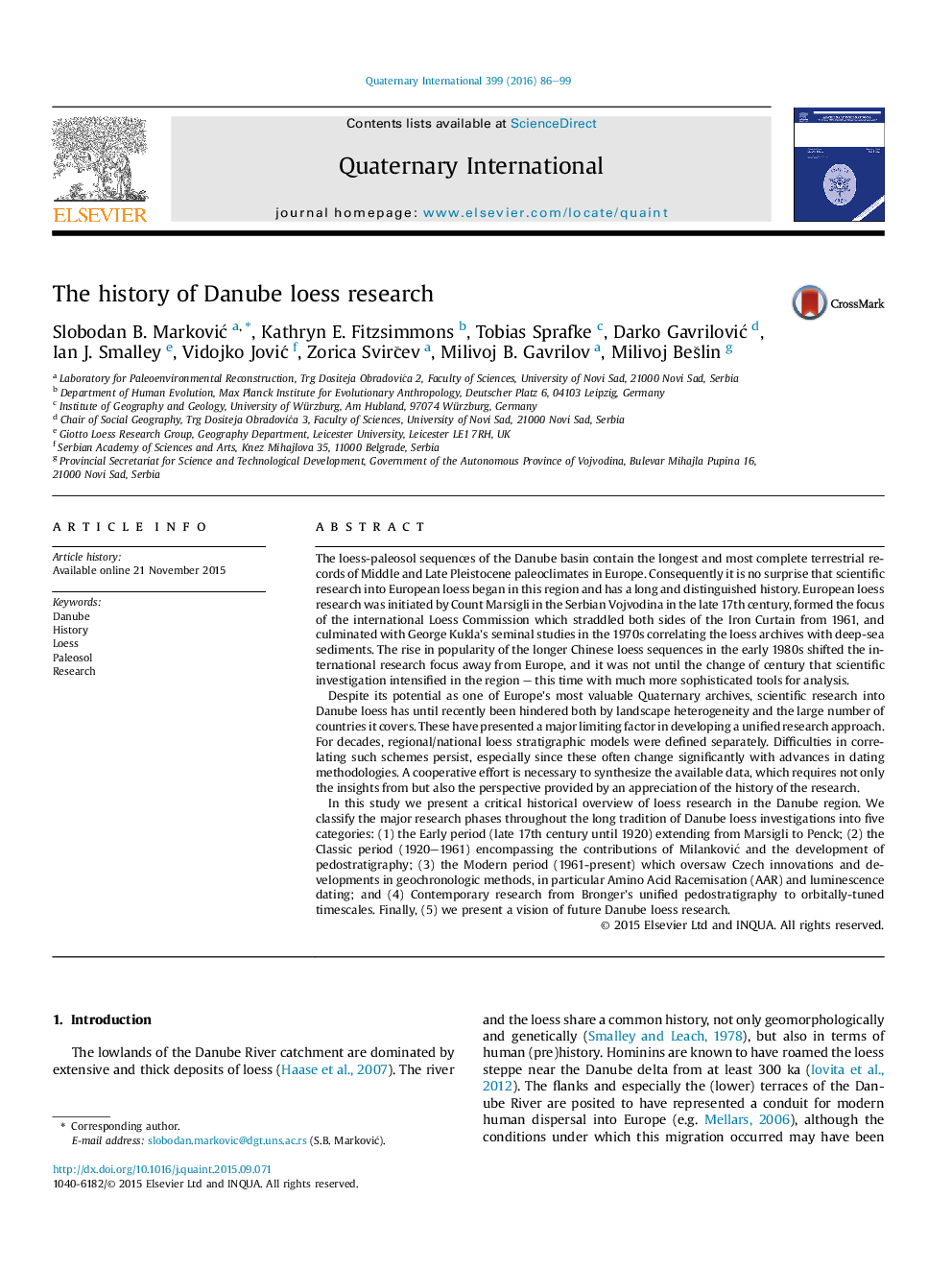| کد مقاله | کد نشریه | سال انتشار | مقاله انگلیسی | نسخه تمام متن |
|---|---|---|---|---|
| 1040258 | 1484099 | 2016 | 14 صفحه PDF | دانلود رایگان |
The loess-paleosol sequences of the Danube basin contain the longest and most complete terrestrial records of Middle and Late Pleistocene paleoclimates in Europe. Consequently it is no surprise that scientific research into European loess began in this region and has a long and distinguished history. European loess research was initiated by Count Marsigli in the Serbian Vojvodina in the late 17th century, formed the focus of the international Loess Commission which straddled both sides of the Iron Curtain from 1961, and culminated with George Kukla's seminal studies in the 1970s correlating the loess archives with deep-sea sediments. The rise in popularity of the longer Chinese loess sequences in the early 1980s shifted the international research focus away from Europe, and it was not until the change of century that scientific investigation intensified in the region – this time with much more sophisticated tools for analysis.Despite its potential as one of Europe's most valuable Quaternary archives, scientific research into Danube loess has until recently been hindered both by landscape heterogeneity and the large number of countries it covers. These have presented a major limiting factor in developing a unified research approach. For decades, regional/national loess stratigraphic models were defined separately. Difficulties in correlating such schemes persist, especially since these often change significantly with advances in dating methodologies. A cooperative effort is necessary to synthesize the available data, which requires not only the insights from but also the perspective provided by an appreciation of the history of the research.In this study we present a critical historical overview of loess research in the Danube region. We classify the major research phases throughout the long tradition of Danube loess investigations into five categories: (1) the Early period (late 17th century until 1920) extending from Marsigli to Penck; (2) the Classic period (1920–1961) encompassing the contributions of Milanković and the development of pedostratigraphy; (3) the Modern period (1961-present) which oversaw Czech innovations and developments in geochronologic methods, in particular Amino Acid Racemisation (AAR) and luminescence dating; and (4) Contemporary research from Bronger's unified pedostratigraphy to orbitally-tuned timescales. Finally, (5) we present a vision of future Danube loess research.
Journal: Quaternary International - Volume 399, 18 April 2016, Pages 86–99
